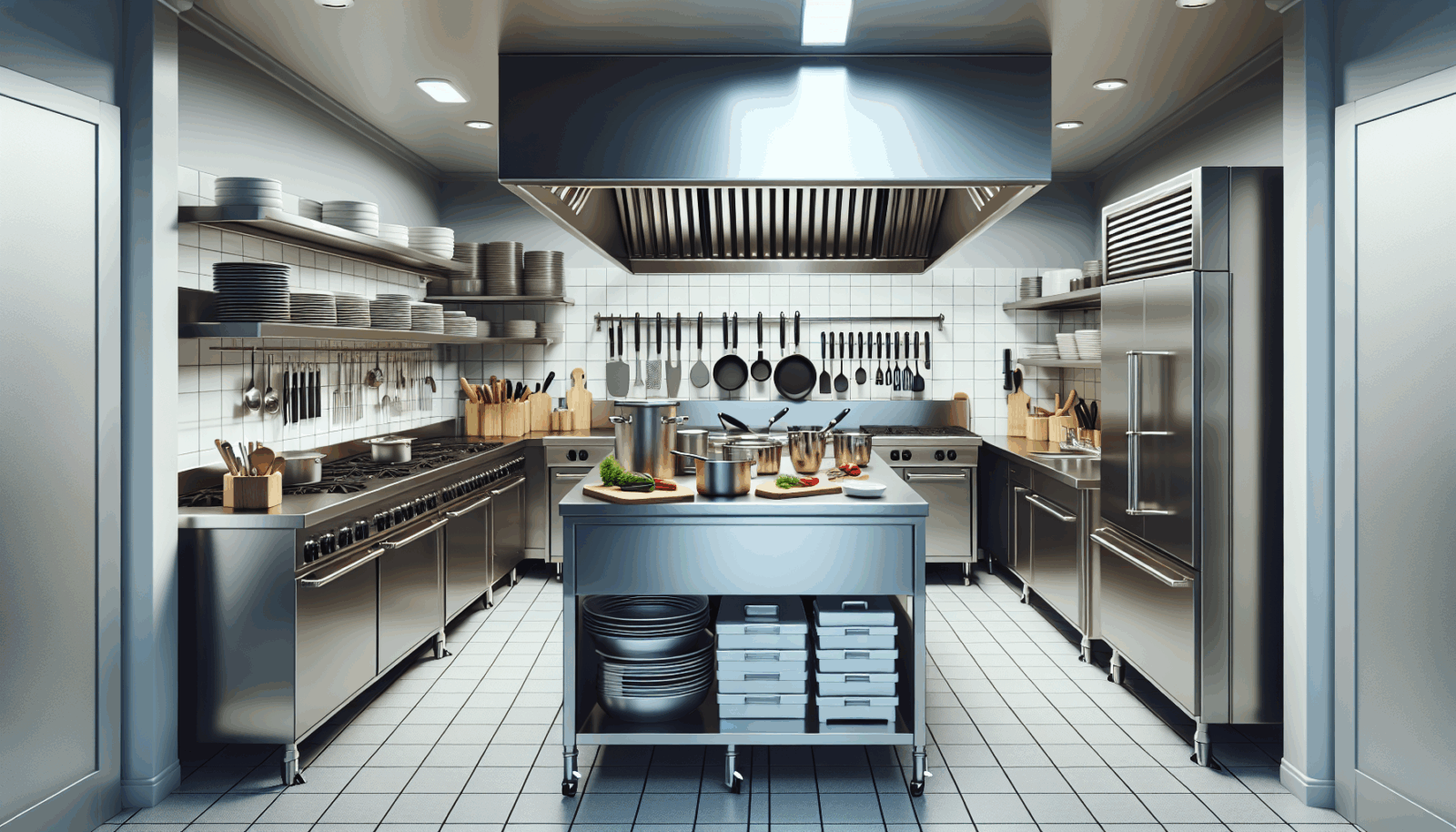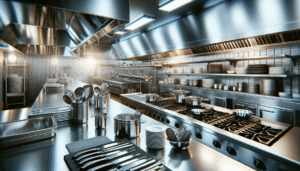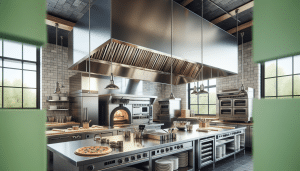Let’s face it, owning a home means juggling many responsibilities, and kitchen maintenance can often sneak low on the to-do list. Unfortunately, neglecting your kitchen vent hood can lead to inefficiency and bigger issues. Luckily, we’re here to help. In this article, Utah Hood Cleaning will guide homeowners like you through invaluable tips for a successful kitchen vent hood inspection.
Understanding Your Vent Hood
Your kitchen vent hood plays a crucial role in maintaining air quality and cleanliness. It functions by sucking up smoke, Grease, and odors produced during cooking, preventing them from circulating in your home. Understanding its working mechanism is the first step toward efficient maintenance.
Did you know that different types of vent hoods serve distinct purposes? For example, ducted hoods connect to a duct system that exhausts air to the outside, while ductless models Filter and recirculate air back into the kitchen. Knowing your vent hood type will help tailor your inspection techniques accordingly.
Why Inspections Are Essential
Routine inspections are the heartbeat of a healthy home. Over time, grease and grime build up in your vent hood, reducing its efficiency and increasing the risk of fire hazards. A timely inspection can prevent these costly issues from escalating.
Moreover, regular maintenance extends your vent hood’s lifespan, ensuring that it functions optimally to protect your kitchen from fumes and odors. Let us guide you through the essentials of a comprehensive inspection, keeping your kitchen safe and sound.
Tools You Need for Inspection
Before diving into the inspection process, it’s crucial to gather the right tools. Having the right equipment not only makes the job easier but also ensures thoroughness. We recommend having a flashlight to check for any hidden spots, a screwdriver to access different components, and a degreaser for cleaning tasks.
These basic tools will serve you well during a standard inspection. For those looking to get more in-depth, consider investing in a vent hood cleaning brush and a handheld vacuum cleaner. These will help you reach tight spaces and remove stubborn debris with ease.
Spotting Common Issues
Now, let’s delve into what you might find during an inspection. One common issue is excessive grease buildup, which can impede performance and pose a fire risk. Additionally, be on the lookout for unusual noises, which might indicate mechanical problems that need addressing.
Another frequent problem homeowners face is poor ventilation. This could be due to clogged filters or a blocked duct. If you spot these issues, don’t fret! We’ll provide solutions as we continue exploring the inspection process. Knowing these common problems helps you stay proactive in maintaining your kitchen’s safety and functionality.
Cleaning the Filters
A major part of any vent hood inspection is cleaning the filters. These filters trap grease and particles, preventing them from contaminating your kitchen. Over time, they become less effective and need a good scrub.
Remove the filters carefully and soak them in hot, soapy water. Use a non-abrasive brush to gently scrub away grease and grime. Remember, clean filters not only improve your vent hood’s efficiency but also enhance the overall air quality in your home. It’s a simple step that makes a big difference!
Checking for Proper Ventilation
Proper ventilation is key to a well-functioning kitchen hood. Start by turning on your hood and listening closely. Is the airflow steady, or do you hear unusual sounds like rattling or humming? These could hint at an airflow obstruction or mechanical issue.
Inspect the ductwork for any visible blockages or kinks. The duct should be straight and airtight to allow optimal airflow. Ensure the exterior vent is not obstructed by debris such as leaves or nests. If you notice any issues here, it might be time for a professional check.
Examining the Fan Blades
Fan blades are integral to your hood’s functionality, efficiently circulating air out of the kitchen. During inspections, check for dirt accumulation or bent blades that can disrupt airflow. If the fan is dirty, clean it gently using a cloth and mild detergent.
Listen for any unusual noises when the fan is turned on. If you hear rattling, it could indicate that the blades are unbalanced or damaged. Addressing these issues promptly helps maintain the mechanical health of your vent hood, ensuring continuous efficient performance.
Testing Light Fixtures
The vent hood’s light fixtures do more than illuminate your cooking space; they ensure safety by helping you see what you’re cooking. To test them, simply flip the switch and observe the brightness.
If the lights flicker or don’t come on, it might be time to replace the bulbs. Avoid using bulbs with a higher wattage than recommended, as this can damage the fixtures. Regular maintenance of these lights not only provides better visibility but also extends their lifespan.
Troubleshooting Advanced Issues
Occasionally, an inspection might reveal issues beyond simple cleaning or bulb replacement. Here, we focus on some advanced troubleshooting techniques. Check the vent hood’s electrical connections for loose wires or wear and tear. If you’re comfortable, use a multimeter to assess power continuity.
Complex problems, such as a faulty motor or damaged ductwork, might require professional intervention. Remember, it’s always better to call an expert rather than risk further damage. We’ve got your back, and our expertise can safely tackle these intricate challenges.
Professional Maintenance Services
Sometimes, despite your best efforts, a professional touch may be necessary. At Utah Hood Cleaning, we offer comprehensive services to ensure your kitchen vent hood’s peak performance. Professionals have access to specialized tools and techniques that can address hard-to-reach areas and intricate mechanical problems.
Our services are designed to complement your regular upkeep efforts, adding an extra layer of security and efficiency to your kitchen. So, when in doubt, reach out. Let us handle the tough stuff, giving you peace of mind and a safer cooking environment.
Quick Tips for a Smooth Inspection
- Regular Schedule: Establish a routine inspection schedule to keep track of maintenance needs and identify problems early.
- Check Grease Traps: Empty and clean grease traps frequently to prevent buildup that can lead to blockages or malfunctions.
- Use Appropriate Cleaning Agents: Select cleaners designed for kitchen appliances to avoid damaging your hood’s surface.
- Inspect Seals and Gaskets: Look for wear or damage in seals that can lead to leaks or reduced efficiency.
- Document Findings: Keep a record of inspection results to track trends and inform future maintenance decisions.
Conclusion
Regular vent hood inspections are vital for ensuring a safe, efficient kitchen. These essential tips kickstart your journey toward a cleaner, safer cooking environment. For all your kitchen vent hood needs, Contact Us by phone # 801-853-8155 or Request a Free Quote.




